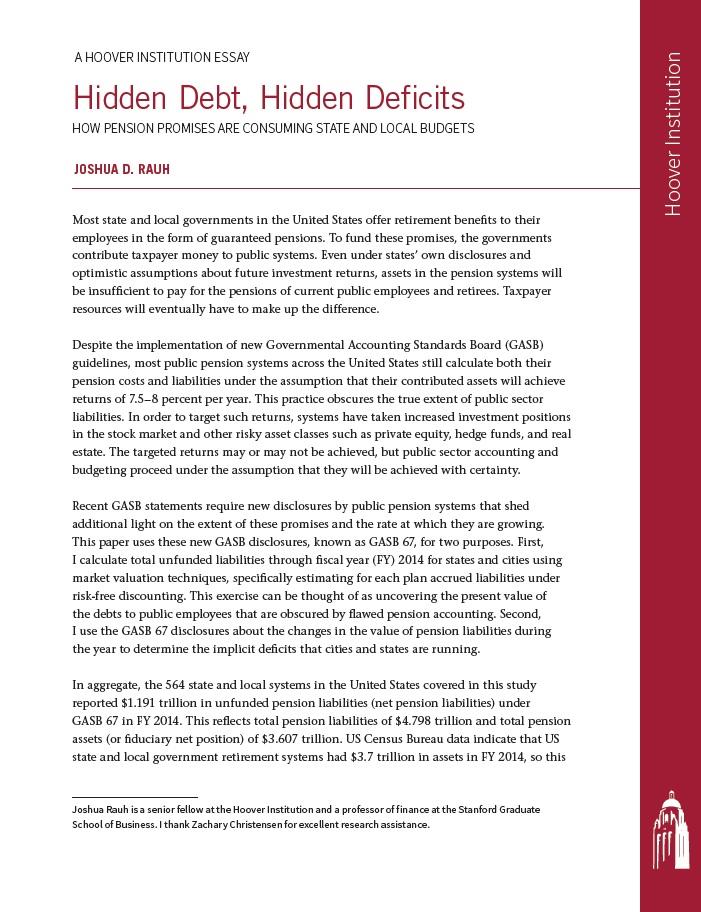The Hoover Institution Press today released Hidden Debt, Hidden Deficits – a data-rich study by Hoover Institution Senior Fellow Joshua Rauh -- that calls attention to the fact that almost no state or local government is running a balanced budget, with the reality being that runaway pension costs are consuming state and local budgets.
“The problem of unfunded pension liabilities has become too big to ignore,” said Rauh. “State and local governments promise guaranteed pensions based on targeted returns that are far from certain. In reality, assets in the pension systems will be insufficient to pay for these promises to retirees, resulting in a heavy burden being placed on taxpayers to make up the difference.”
Despite the new Governmental Accounting Standard Board (GASB) guidelines, the majority of public pension systems in the United States still calculate their pension costs and liabilities using the assumption that their contributed assets will achieve returns of 7 to 8 percent a year, ignoring the extent of public sector liabilities. To target these investment returns, systems have taken increased positions in the stock market and other risky assets, including private equity, hedge funds, and real estate. The targeted returns may or may not be achieved, but public sector accounting and budgeting proceed as though they will be achieved with certainty.
“This study shows that unfunded pension liabilities are devastatingly widespread and only getting worse,” said Rauh. “With hundreds of state and local governments drowning in retiree benefit debt, the need for bold structural reform has never been so pertinent. We need to bring local and state governments’ retiree benefits back to solvency before we see this vast epidemic limit the ability of state and local governments to provide adequate services in areas such as public safety and education.”
In total, the study covers 564 state and local systems in the United States that reported $1.91 trillion in unfunded pension liabilities under GASB 67 in FY 2014. The analysis reveals that, despite well-performing markets from 2009 to 2014, state and local government pension systems are underwater by $3.4 trillion and that the true cost of keeping pension liabilities from rising is17.5 percent of state and local budgets. Even contributions of those magnitudes would not begin to pay down the trillions of dollars of unfunded legacy liabilities; they would simply stop the unfunded liability from rising.
Author: Joshua D. Rauh is a Senior Fellow at the Hoover Institution and the Ormond Family Professor of Finance at the Stanford Graduate School of Business. He formerly taught at the University of Chicago and Northwestern University. His research on state and local pension systems in the United States has received national media coverage in outlets such as the Wall Street Journal, the New York Times, the Financial Times, and The Economist.
About the Hoover Institution: The Hoover Institution, Stanford University, is a public policy research center devoted to the advanced study of economics, politics, history, and political economy—both domestic and foreign—as well as international affairs. With its eminent scholars and world-renowned Library & Archives, the Hoover Institution seeks to improve the human condition by advancing ideas that promote economic opportunity and prosperity and secure and safeguard peace for America and all mankind.
CONTACT INFORMATION: Jenny Mayfield | Office of Public Affairs | Hoover Institution | jennymayfield@stanford.edu | 650-723-0603























